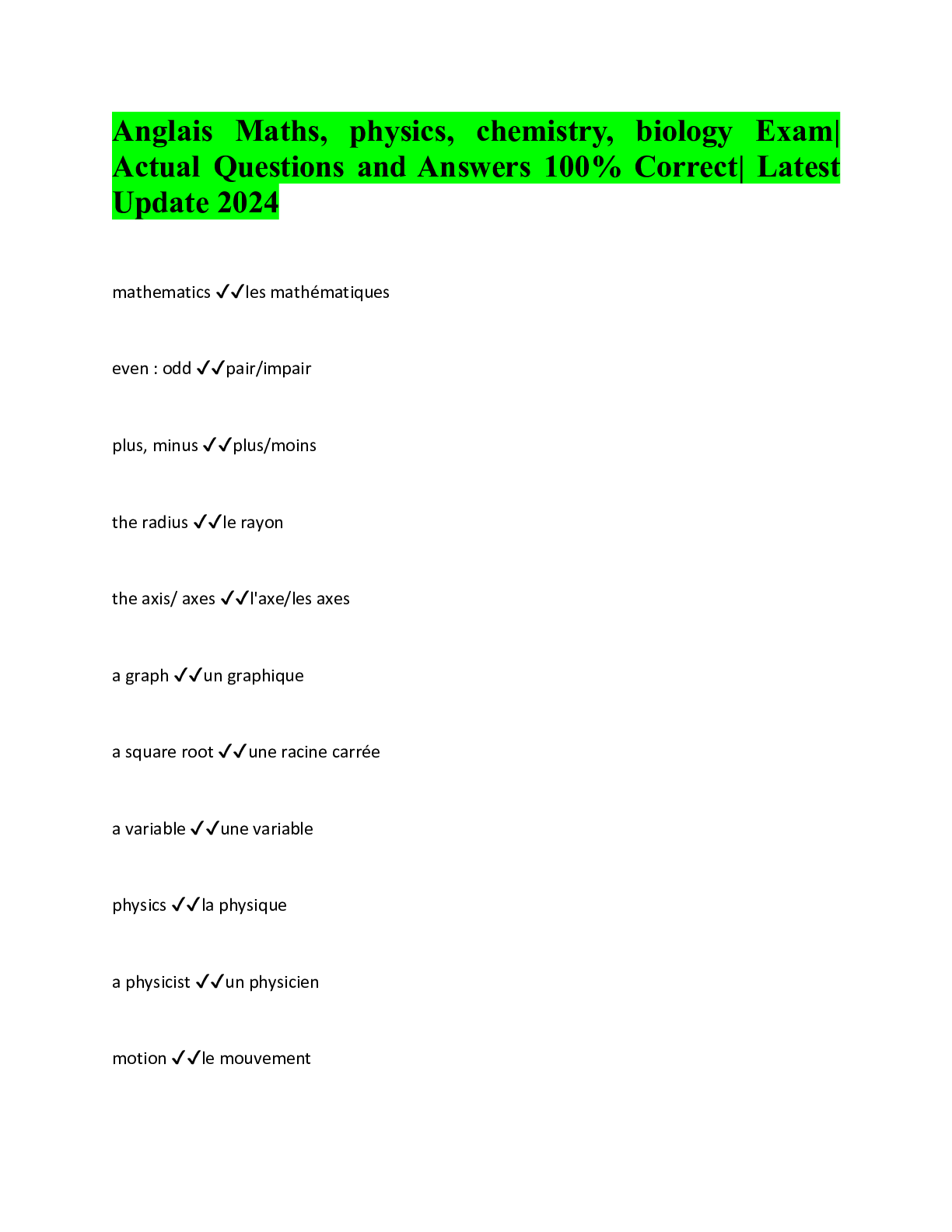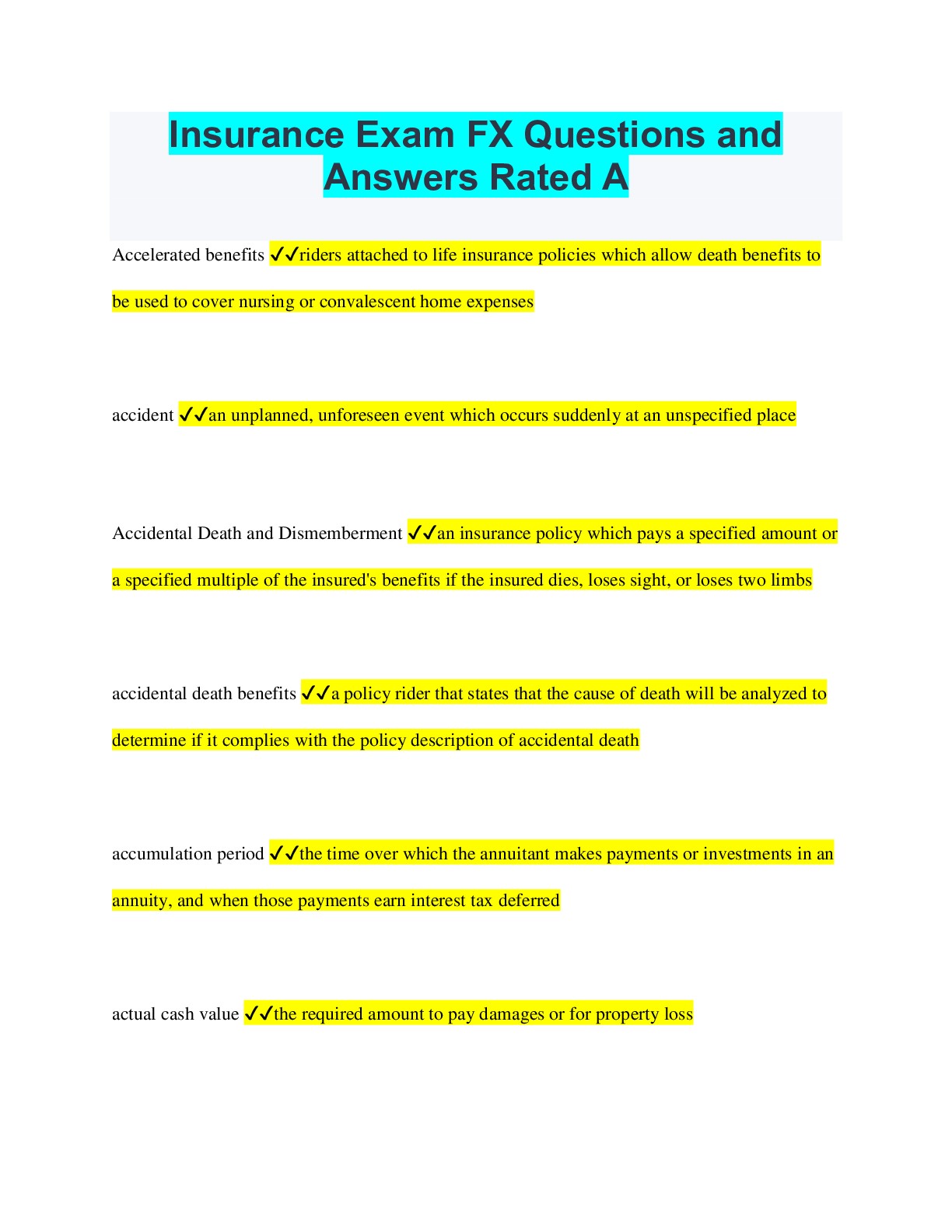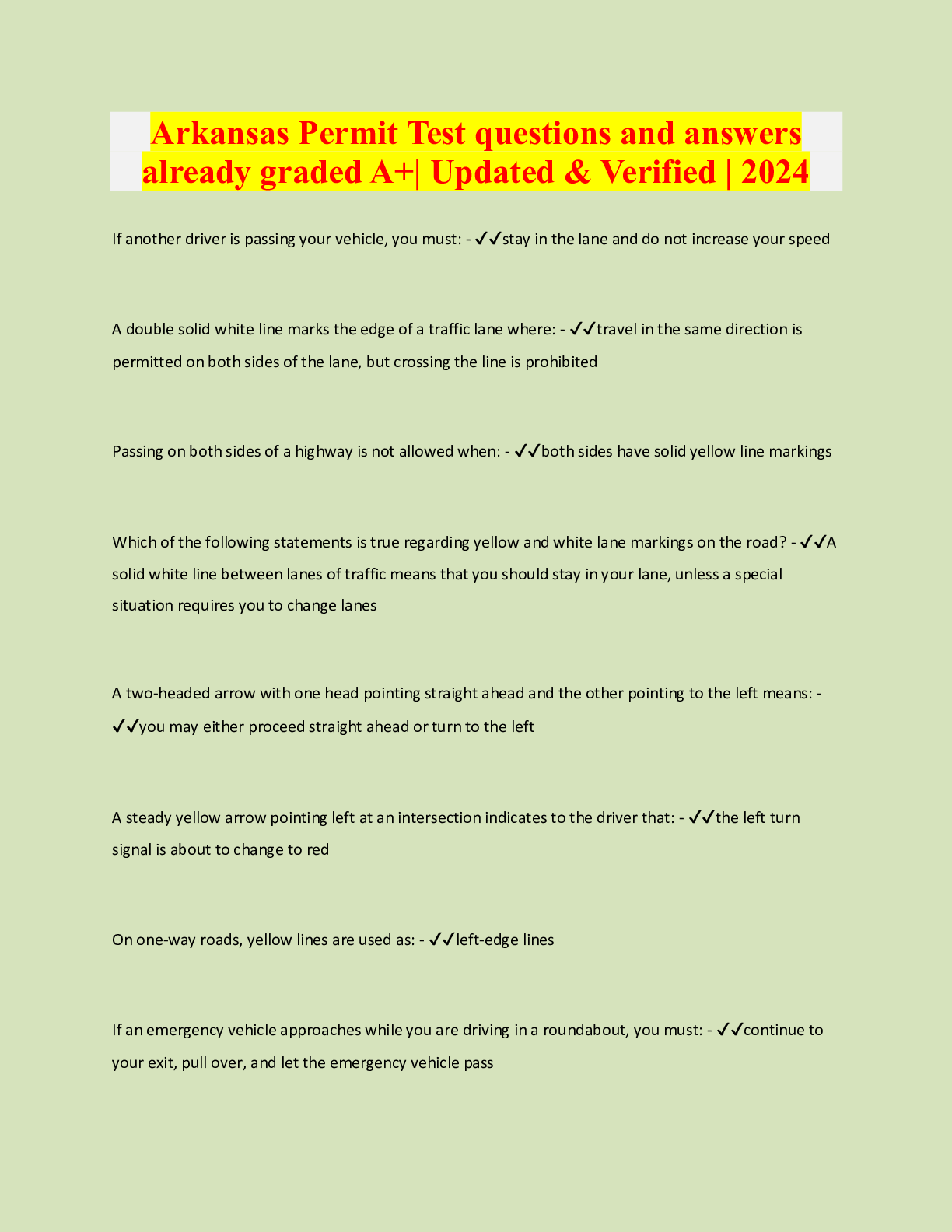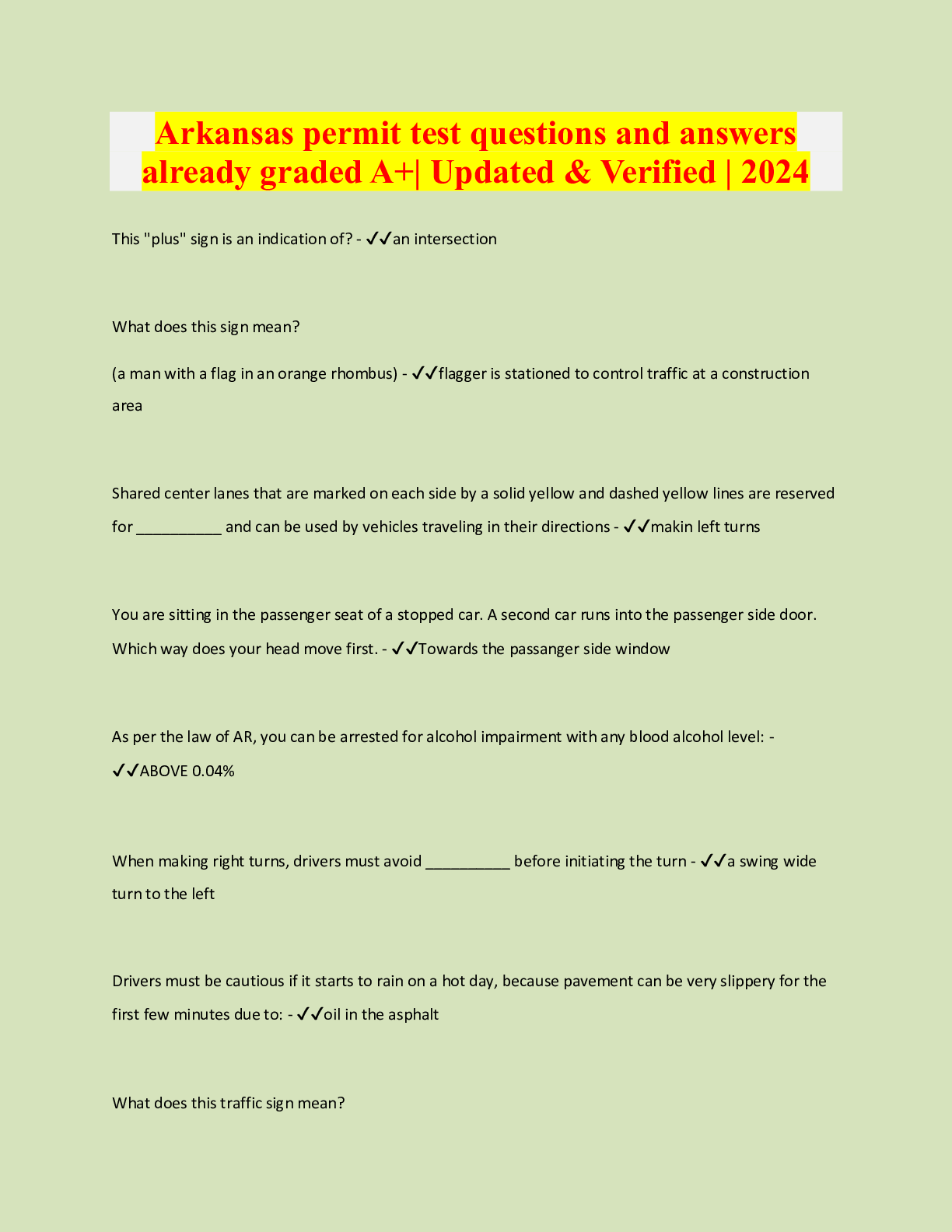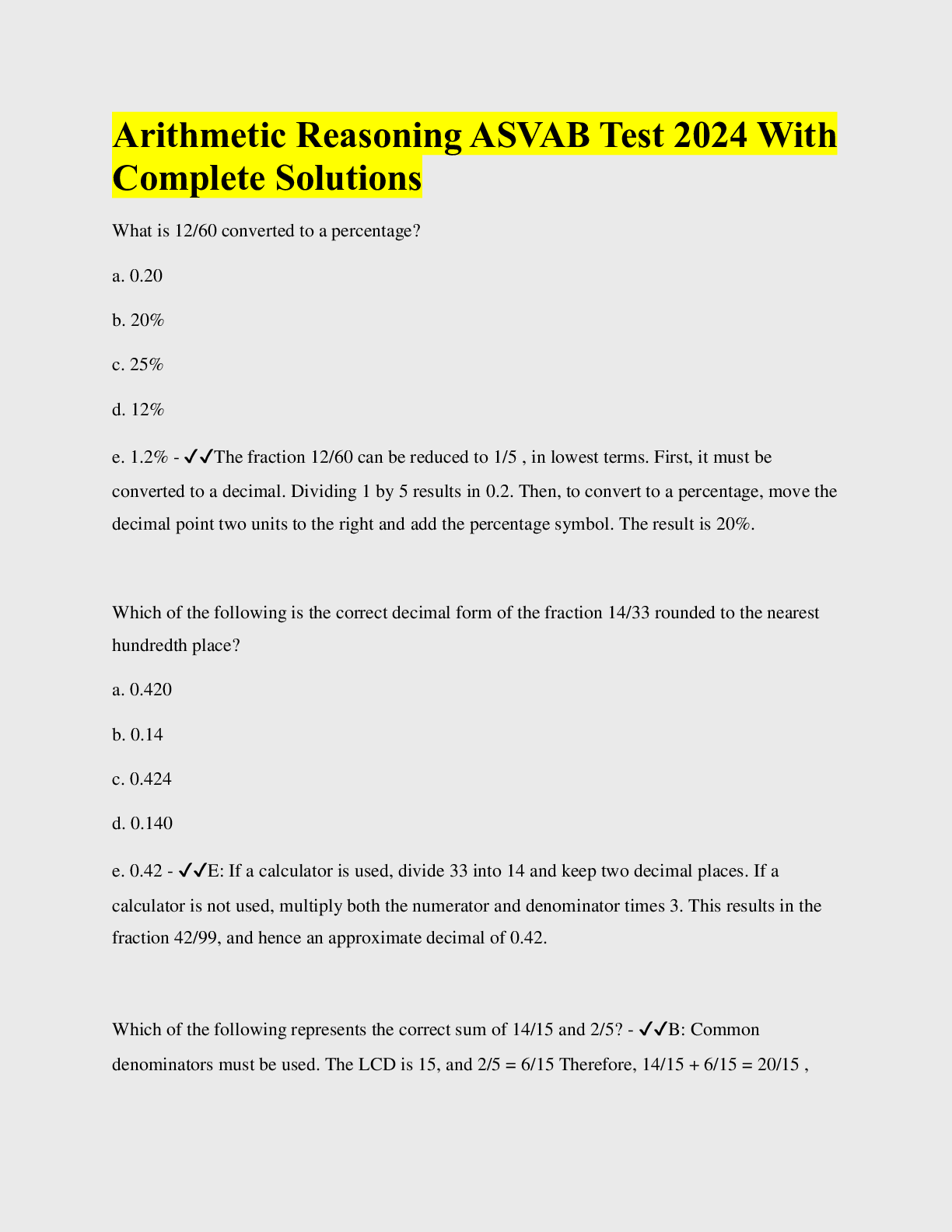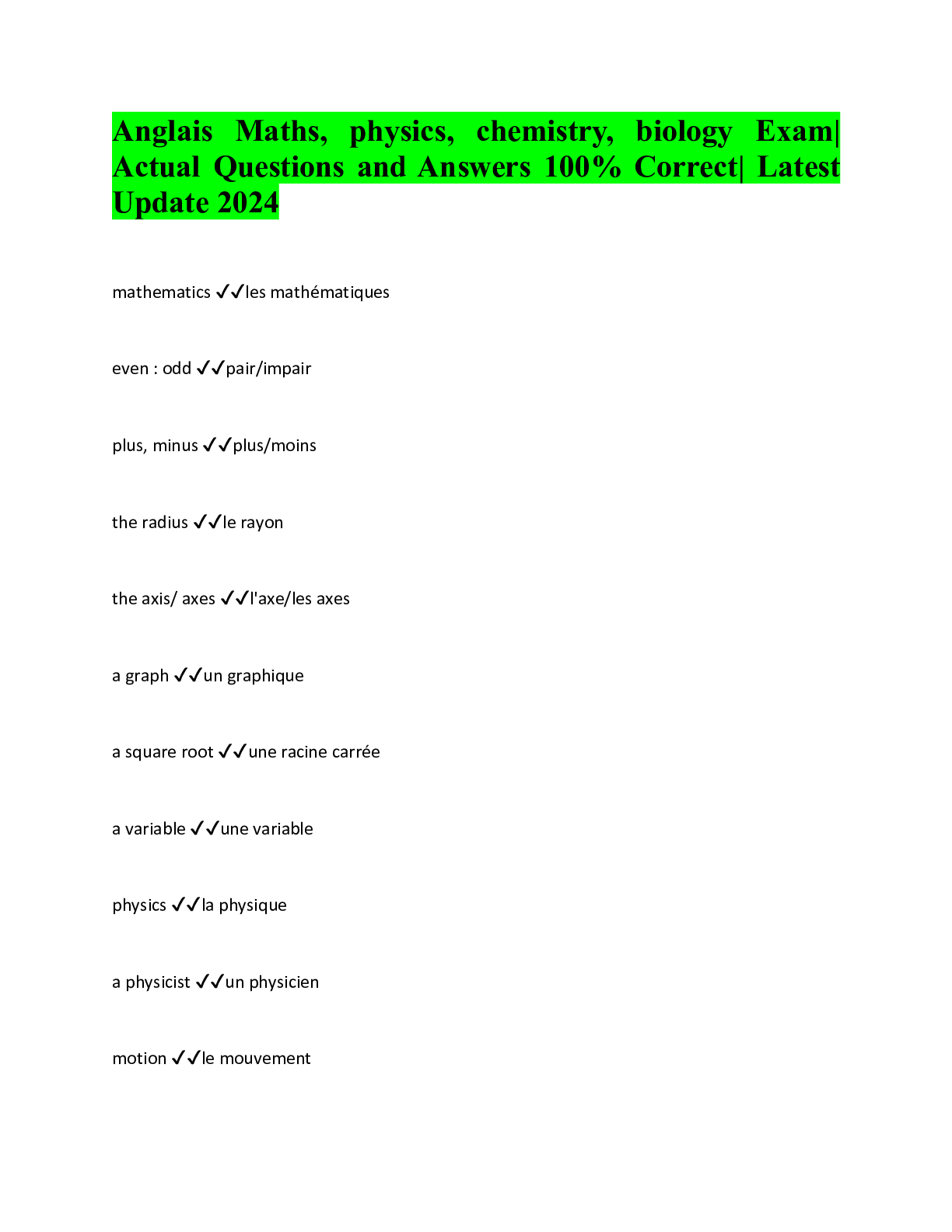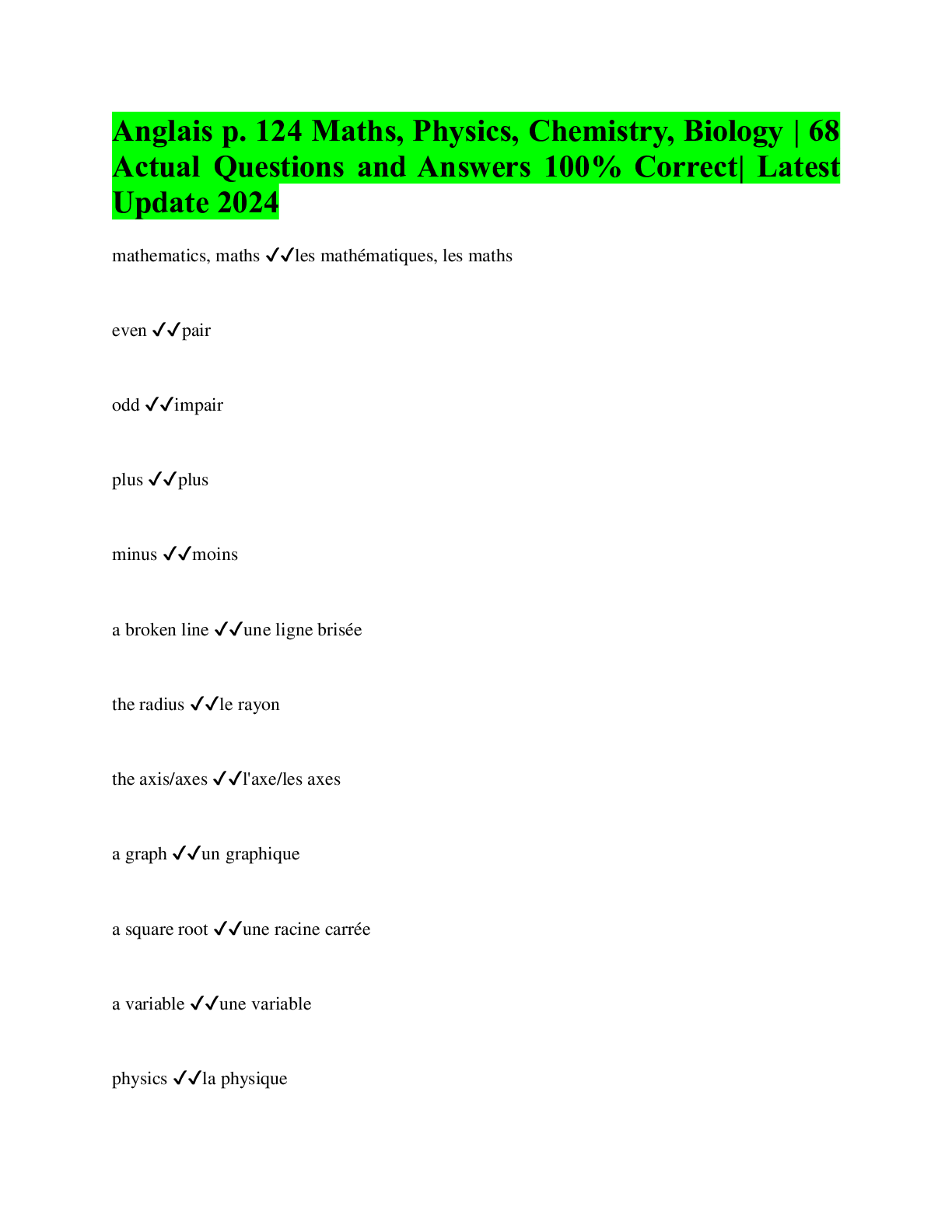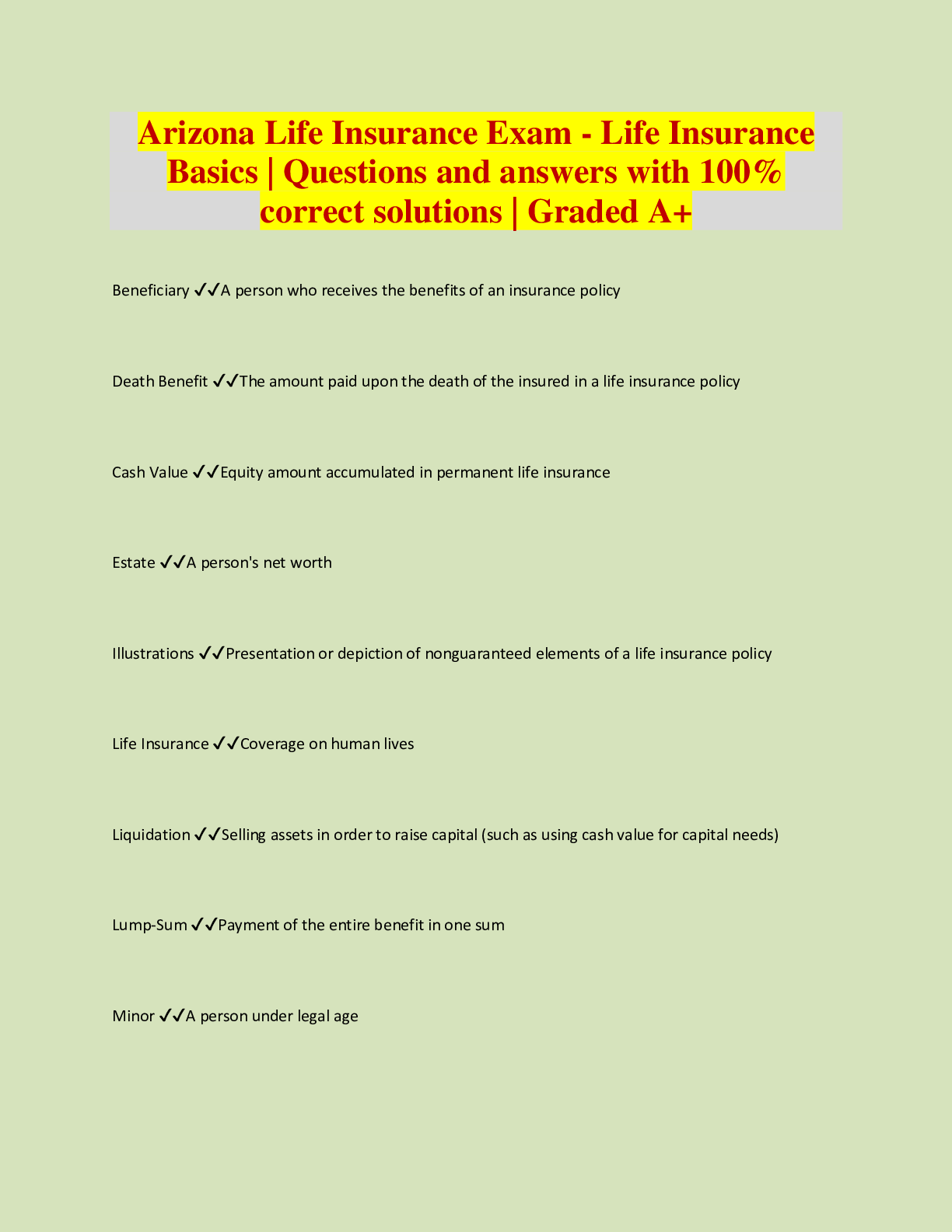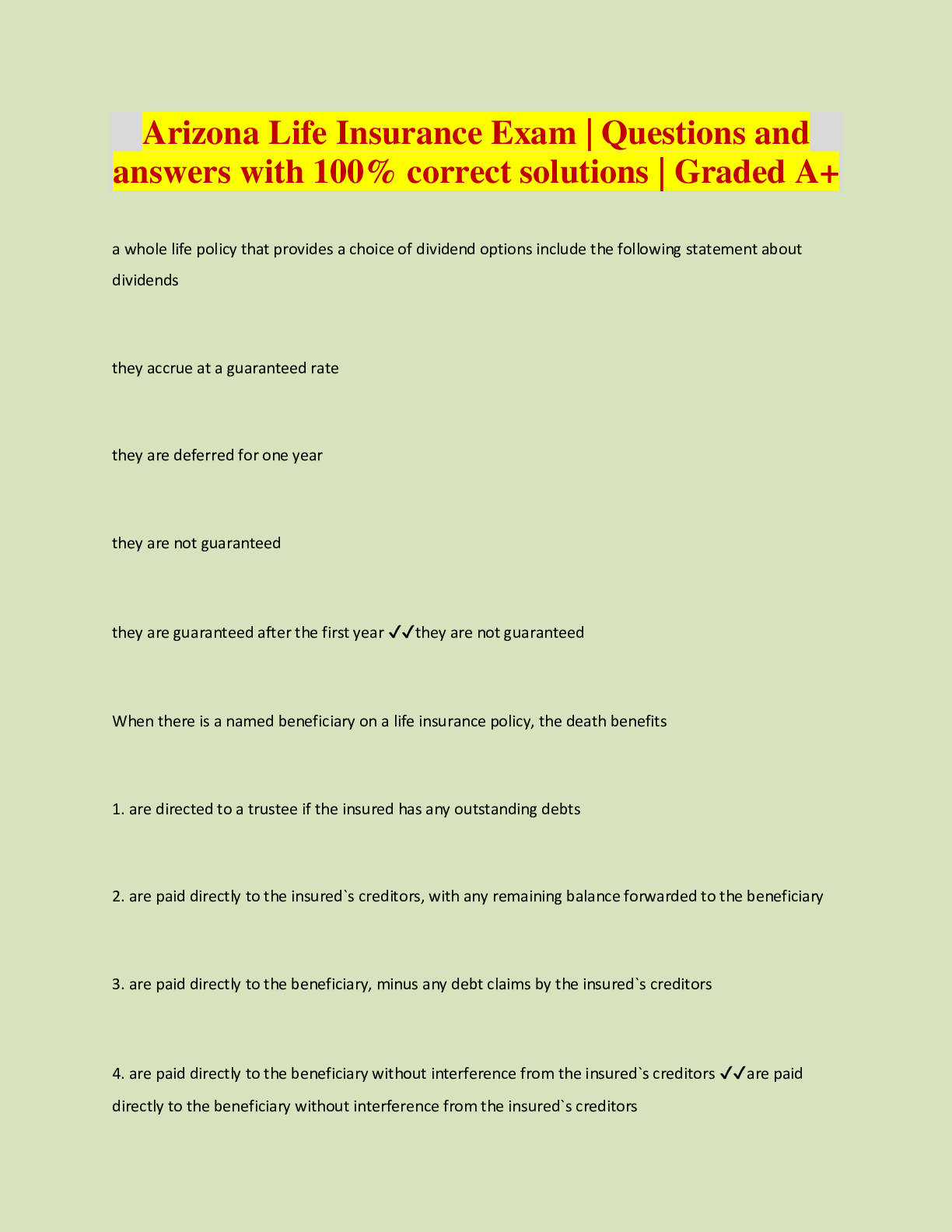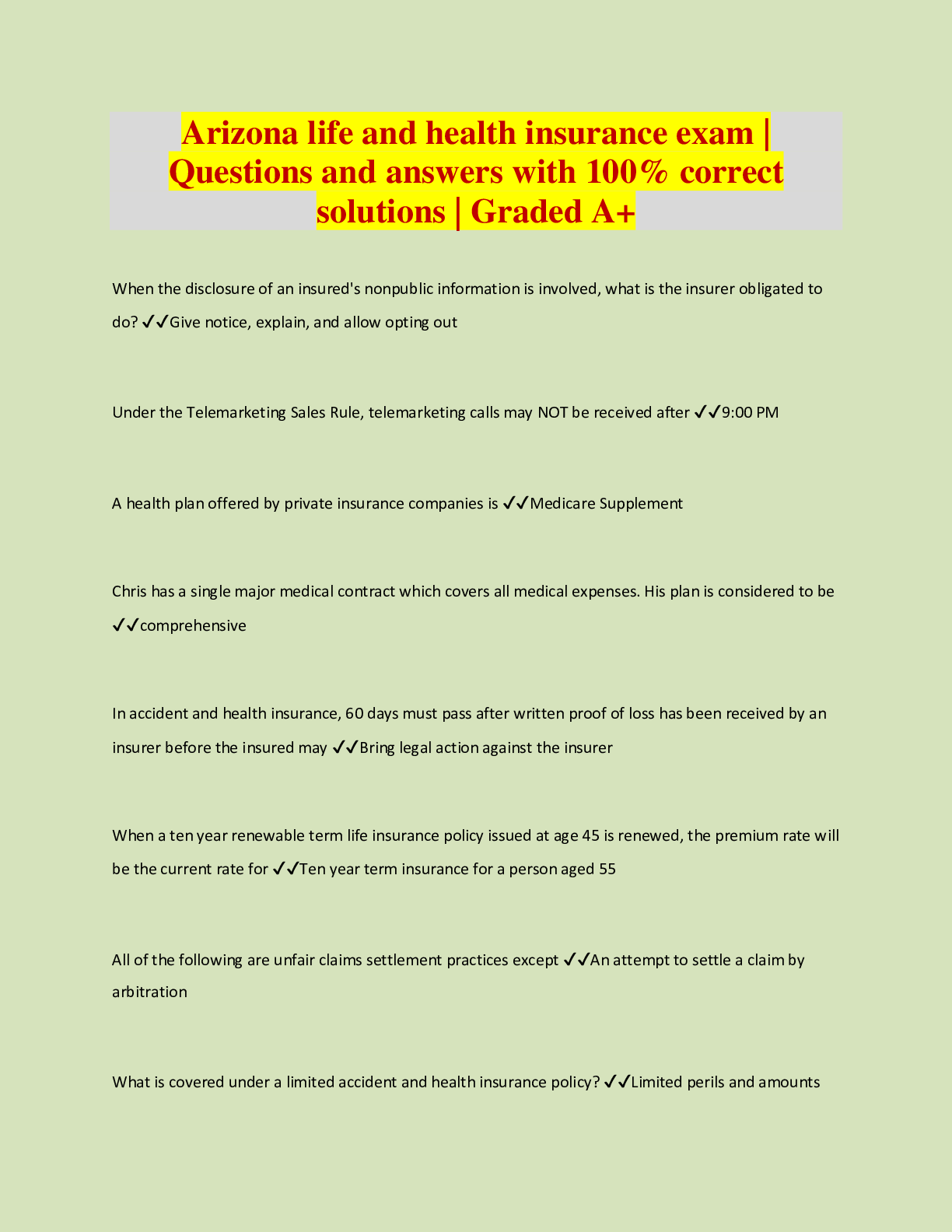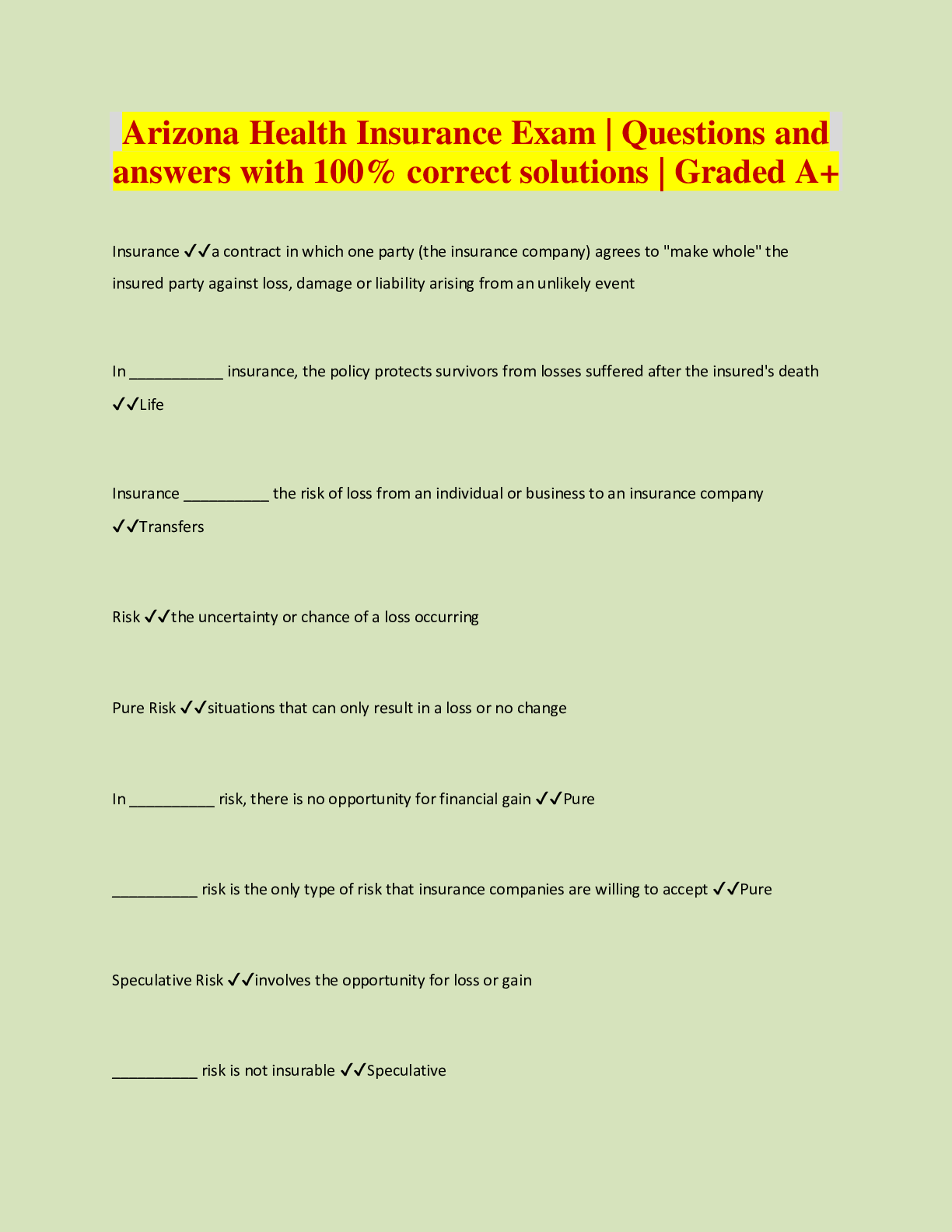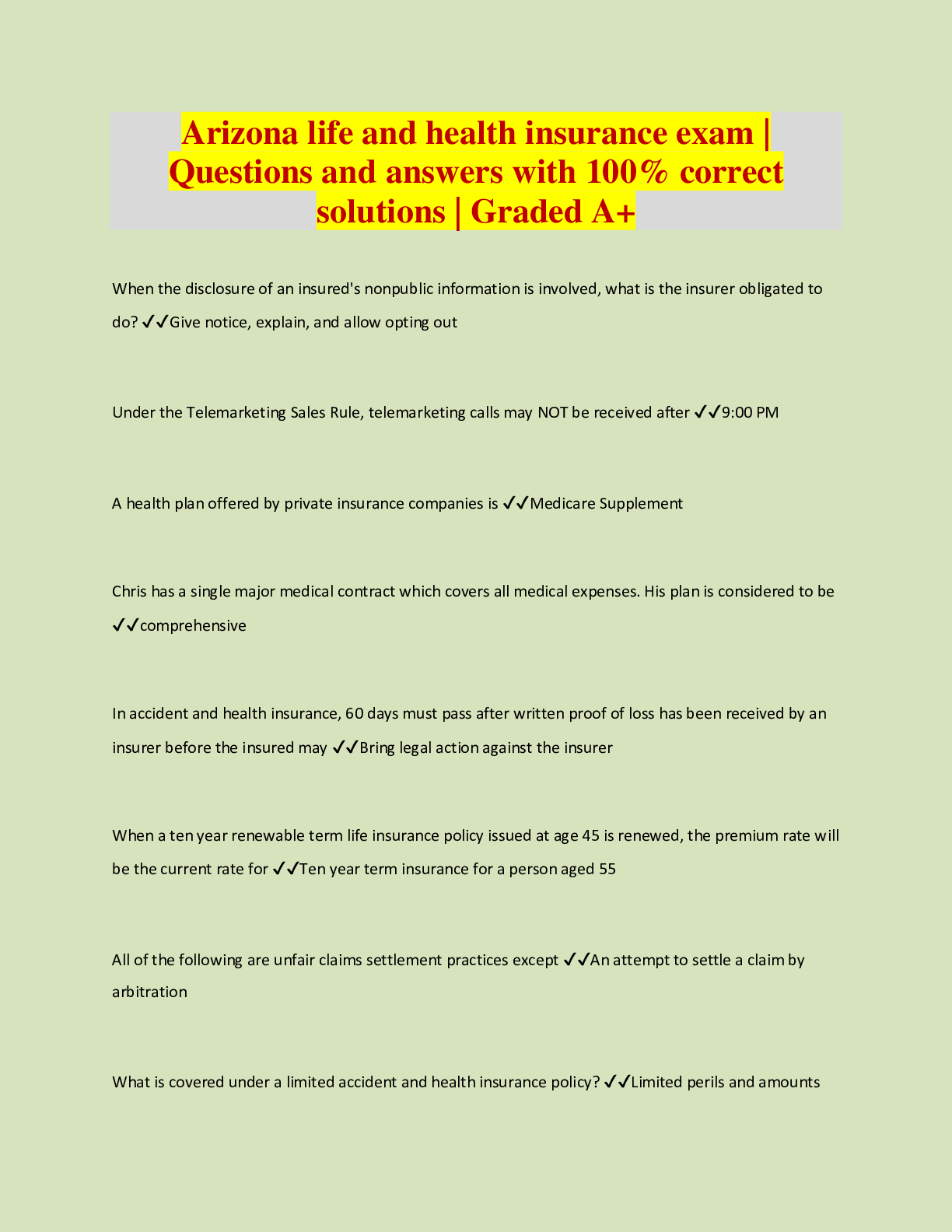Biology > EXAM > AC HPAT Algonquin College Test Prep Biology | Actual Questions and Answers 100% Correct| Latest Upda (All)
AC HPAT Algonquin College Test Prep Biology | Actual Questions and Answers 100% Correct| Latest Update 2024
Document Content and Description Below
active transport ✔✔movement of molecules across a cell membrane from a region of lower concentration to a region of higher concentration—against the concentration gradient. Active transport re... quires cellular energy to achieve this movement. passive transport ✔✔Requires NO energy, movement of molecules from high to low concentration, moves with the concentration gradient covalent bond ✔✔A chemical bond that involves sharing a pair of electrons between atoms in a molecule ionic bond ✔✔Linkage formed from the electrostatic attraction between oppositely charged ions in a chemical compound. Such a bond forms when the valence (outermost) electrons of one atom are transferred permanently to another atom. allosteric bond ✔✔The regulation of an enzyme by binding an effector molecule at a site other than the enzyme's active site. Substrate ✔✔reactant of an enzyme-catalyzed reaction substrate-enzyme complex ✔✔The substrate connects to the enzyme to perform chemical reactions. It connects to the enzyme at the active site. substrate enzyme inhibition ✔✔the substrate or product of an enzyme reaction inhibit the enzyme's activity. Carbohydrates ✔✔Are sugar molecules- our body breaks down carbohydrates into glucose. Glucose, or blood sugar, is the main source of energy for your body's cells, tissues, and organs.Proteins ✔✔Chains of amino acids Lipids ✔✔Energy-rich organic compounds, such as fats, oils, and waxes, that are made of carbon, hydrogen, and oxygen. nucleic acids ✔✔Nucleic acids are naturally occurring chemical compounds that serve as the primary information-carrying molecules in cells. The two main classes of nucleic acids are deoxyribonucleic acid (DNA) and ribonucleic acid (RNA). Lysosomes ✔✔An organelle containing digestive enzymes Vacuole ✔✔Cell organelle that stores materials such as water, salts, proteins, and carbohydrates Mitochondria ✔✔Powerhouse of the cell, organelle that is the site of ATP (energy) production Ribosomes ✔✔a cellular particle made of RNA and protein that serves as the site for protein synthesis in the cell. Smooth Endoplasmic Reticulum ✔✔An endomembrane system where lipids are synthesized, calcium levels are regulated, and toxic substances are broken down. Rough Endoplasmic Reticulum ✔✔System of internal membranes within the cytoplasm. Membranes are rough due to the presence of ribosomes. functions in transport of substances such as proteins within the cytoplasm Golgi apparatus ✔✔stack of membranes in the cell that modifies, sorts, and packages proteins from the endoplasmic reticulumHydroxyl ✔✔the chemical group, ion, or radical OH that consists of one atom of hydrogen and one of oxygen and is neutral or negatively charged. Carbonyl ✔✔a functional group composed of a carbon atom double-bonded to an oxygen atom: C=O. amino acids ✔✔building blocks of proteins Phosphate ✔✔an electrically charged particle that contains the mineral phosphorus PO₄³⁻ oxidation-reduction reaction ✔✔any chemical change in which one species is oxidized (loses electrons) and another species is reduced (gains electrons); also called redox reaction Hydrolysis ✔✔the chemical breakdown of a compound due to reaction with water. Condensation ✔✔The change of state from a gas to a liquid Neutralization ✔✔A reaction of an acid with a base, yielding a solution that is not as acidic or basic as the starting solutions were. passive transport ✔✔movement of a solute from a region of high electrochemical potential on one side of the cell membrane to a region of lower electrochemical potential on the opposite side. facilitated diffusion ✔✔the passive movement of molecules across the cell membrane via the aid of a membrane protein. Endocytosis ✔✔process by which a cell takes material into the cell by infolding of the cell membraneExocytosis ✔✔a process by which the contents of a cell vacuole are released to the exterior through fusion of the vacuole membrane with the cell membrane [Show More]
Last updated: 10 months ago
Preview 3 out of 5 pages

Loading document previews ...
Buy this document to get the full access instantly
Instant Download Access after purchase
Buy NowInstant download
We Accept:

Reviews( 0 )
$5.00
Can't find what you want? Try our AI powered Search
Document information
Connected school, study & course
About the document
Uploaded On
Sep 17, 2024
Number of pages
5
Written in
Additional information
This document has been written for:
Uploaded
Sep 17, 2024
Downloads
0
Views
16

